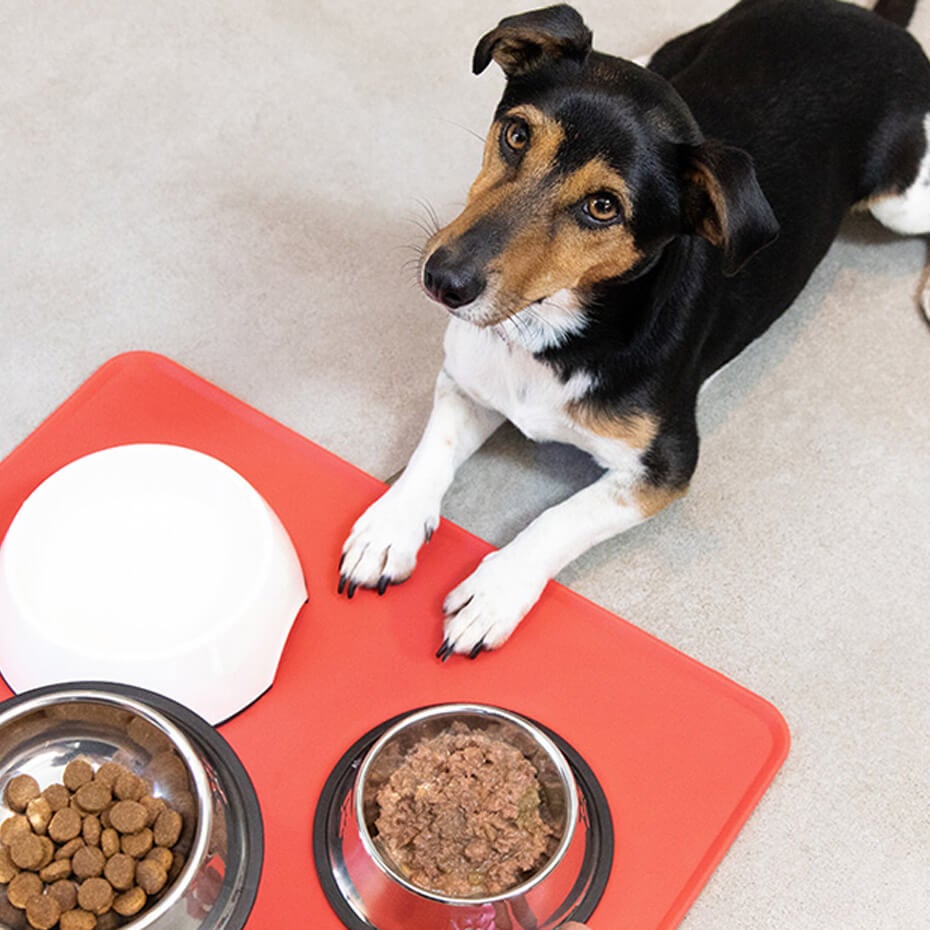
Cushing’s disease is a hormonal condition that is relatively common in middle-aged or older dogs. Read our guide to find out what it is, what’s causing it and how you can care for a dog that has been diagnosed with the disease.
Your dog’s energy levels are likely to decrease as they get older, but did you know that this could point to something other than old age? In some cases, this is one of the signs of a disease known as Cushing’s Syndrome in dogs. Here is what you need to know.
What is Cushing’s disease in dogs?
Cushing’s disease, also known as hyperadrenocorticism, is more common in dogs over 7 years of age. The disease involves excess production of cortisol, a naturally produced steroid that is often referred to as the stress hormone. Certain levels of this hormone within the body are important and contribute to functions such as the immune system or ‘fight or flight’ response. However, the abnormally high levels seen in Cushing’s causes an imbalance of hormone regulation within the body and leads to the symptoms associated with the disease.
The most common cause of Cushing’s disease in dogs is a benign tumour of the pituitary gland, a structure that is located in the brain. The pituitary gland sends messages to the adrenal glands to produce cortisol. In cases of pituitary-dependant Cushing’s disease, these messages continue to be sent to the adrenal glands even if there is already enough cortisol, leading to higher levels in the body.
Less commonly, Cushing’s disease can be caused by tumours of the adrenal glands themselves, this is adrenal-dependent disease. It can also occur if a pet is receiving high doses of steroid treatment for a different medical condition.
Symptoms of Cushing’s in dogs?
Cushing’s in dogs will often go unnoticed for a while, and tends to progress very gradually. Because the disease affects middle-aged and senior dogs, the symptoms are often attributed to ageing at first.
Cortisol is a vital hormone for different functions and organs, meaning that it acts in various ways around the body. Therefore, increased production of the hormone can affect a number of different body systems, and result in various symptoms many of which are non-specific. The list of symptoms of Cushing’s in dogs will differ between individuals and you should consult the vet even if you don’t notice all the signs listed below.
Here are some of the most common symptoms of Cushing’s in dogs:
- Increased thirst and appetite
- Increased urination
- Lethargy or decreased activity levels
- Hair loss
- Thin skin
- Pot-belly appearance
- Increased panting
- General loss of muscle tone
How is Cushing’s disease in dogs diagnosed?
Many of the symptoms of Cushing’s disease are non-specific and can indicate other underlying illnesses. The vet will ask a series of questions to help understand what symptoms you have noticed in your pet. They will also perform a thorough clinical examination to check for any visible signs of disease.
The vet can then recommend appropriate diagnostic tests. Usually this will start with blood tests and often involves ruling out other diseases. Urine tests can also provide useful information. Depending on the results, imaging such as abdominal ultrasound may be recommended.
How can Cushing’s disease in dogs be treated?
The treatment and management plan depends on the type of Cushing’s disease your dog has been diagnosed with. In most cases daily tablets are recommended for keeping the cortisol production under control and the hormone levels within a healthier range. Regular tests at your vets will help make sure the treatment is working as it should.
If your dog is on medication for Cushing’s disease and they show signs such as sudden weakness, vomiting, diarrhoea or even collapse you should contact your vet as an emergency. These can indicate that cortisol levels have been suppressed too much and your dog may be experiencing an ‘Addisonian Crisis’ due to insufficient cortisol levels.
In some cases of adrenal-dependent disease, the vet may recommend surgery to remove the tumour. This procedure has a better prognosis if the tumour is benign rather than malignant.
If your dog develops symptoms of Cushing’s and is taking steroids to manage a different condition, always check with your vet first before decreasing or stopping the steroid treatment. It is important to make sure your dog is not taken off the steroid medication too quickly as this can cause severe side-effects. The vet will guide you through the process of weaning off the treatment safely, if necessary.
Cushing’s in dogs can be mild which means that your pet may not require treatment. They should have regular vet check-ups and need to be monitored closely for progression of the disease in case they need to start medical treatment at a later stage.
Can Cushing’s in dogs be cured?
Most cases of Cushing’s disease cannot be cured, but can be managed successfully for many years.
Once started, medical treatment will continue for the rest of your dog’s life and regular visits to the vet will need to be arranged for long-term monitoring of your pet’s health. In cases of adrenal-dependent disease, surgical removal of a benign tumour may be curative.
Once medical treatment is started you should notice your dog gradually getting back to their normal self. Their thirst, appetite and energy levels should become more normal within a few days to weeks, but regrowth of fur will take several months.
Next, check out how to care for your dog in their golden years.

















